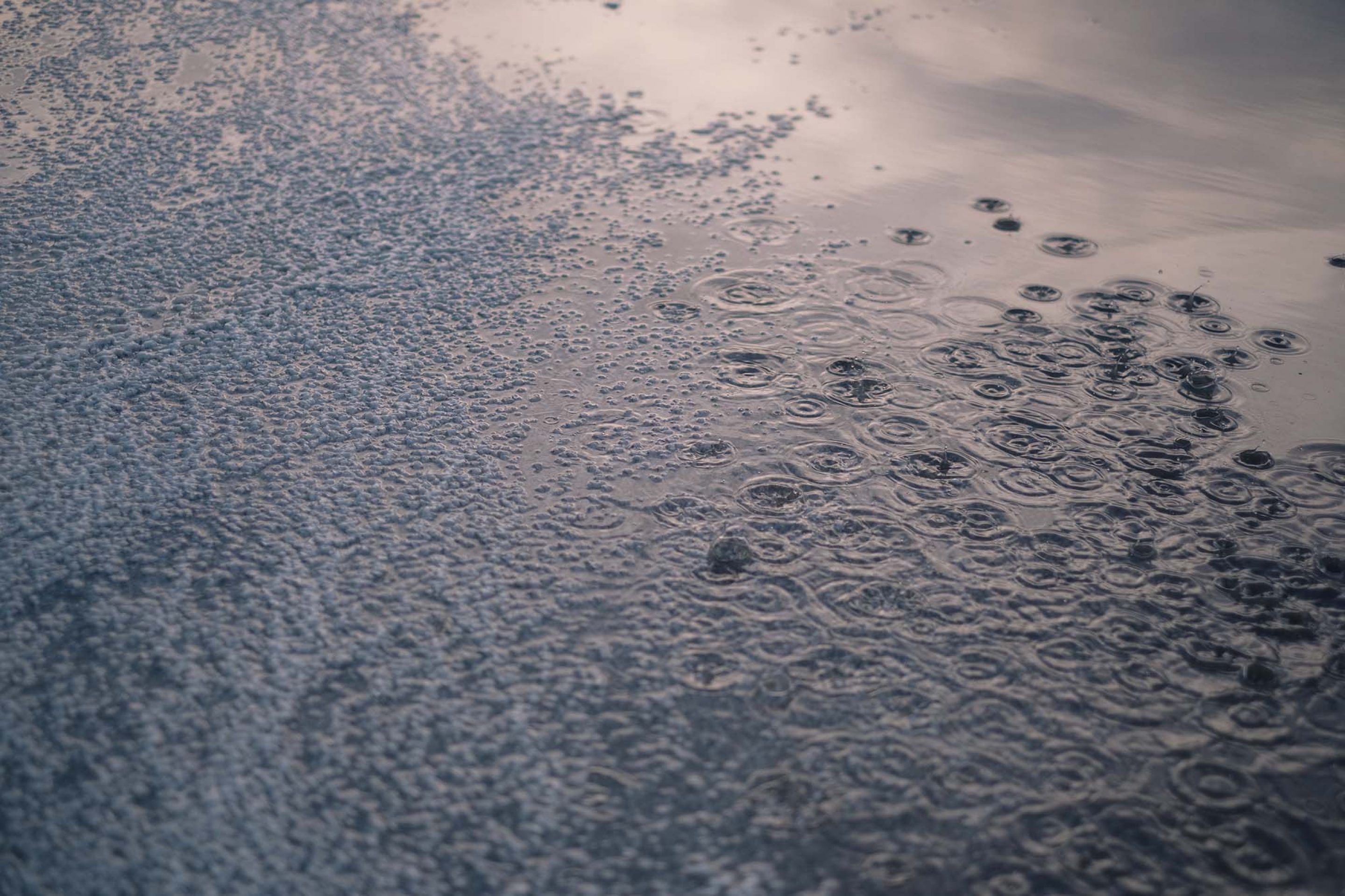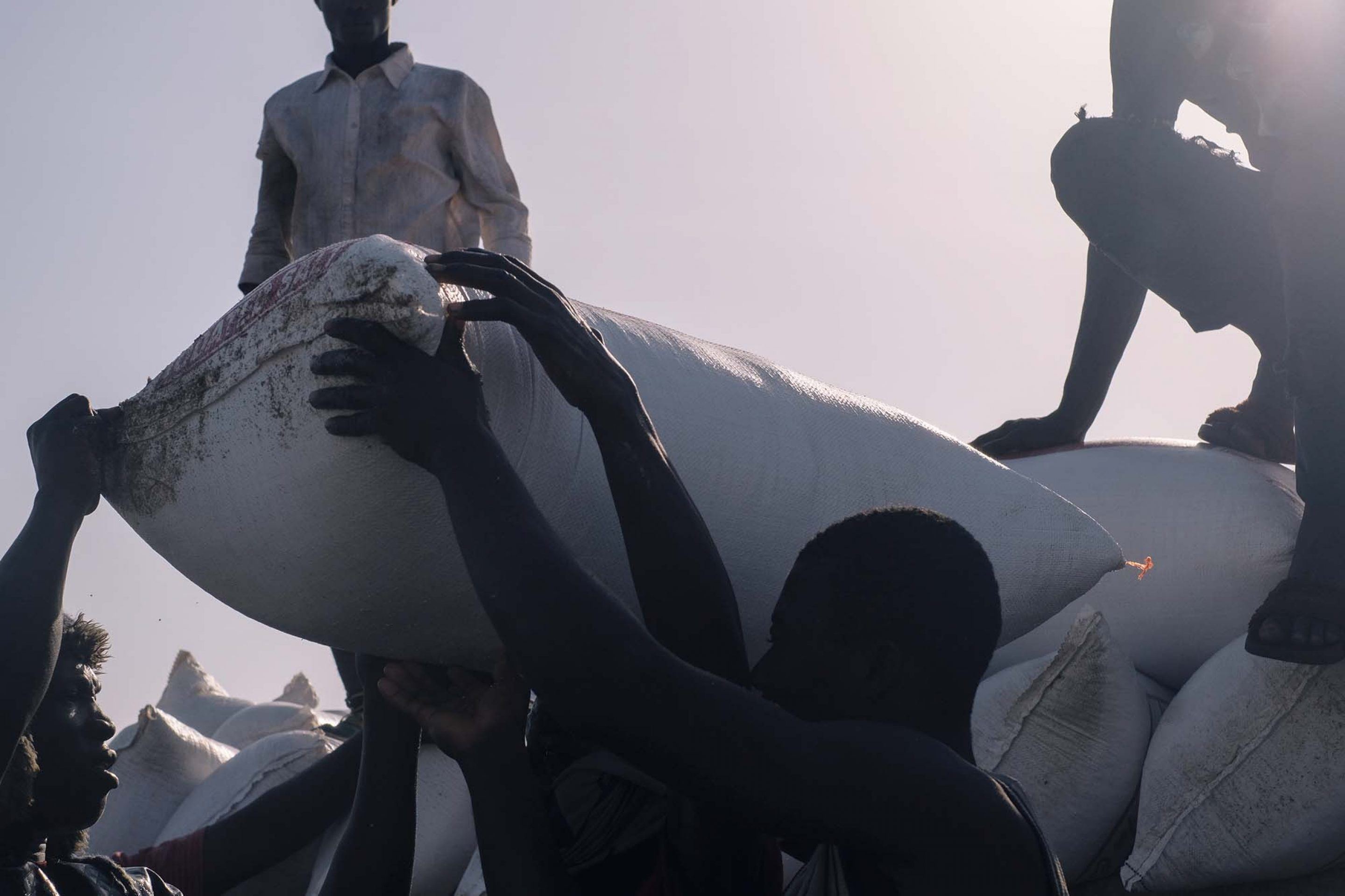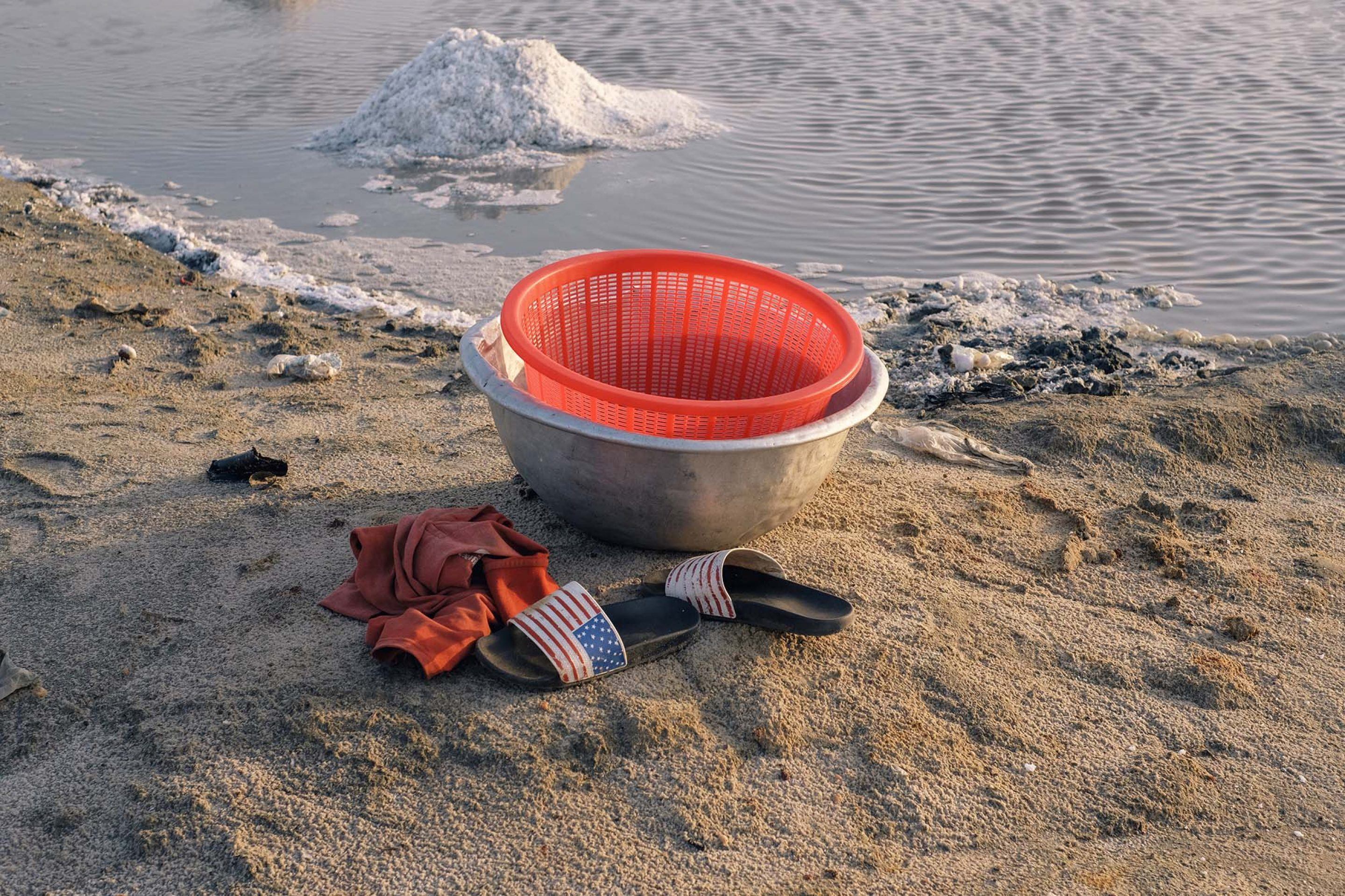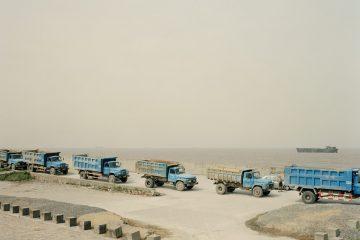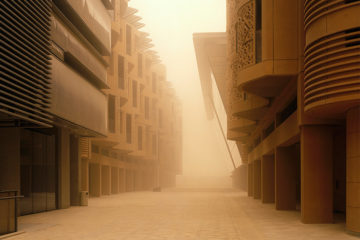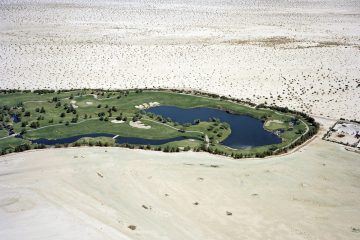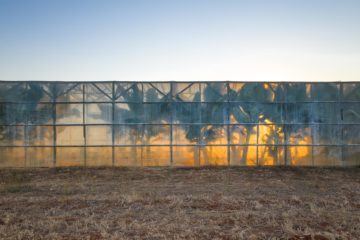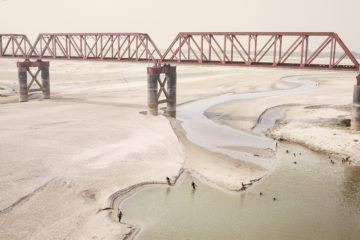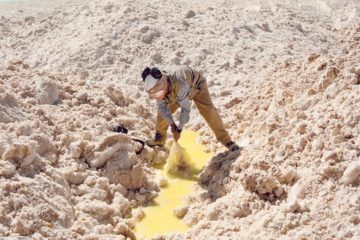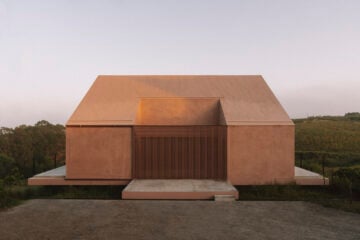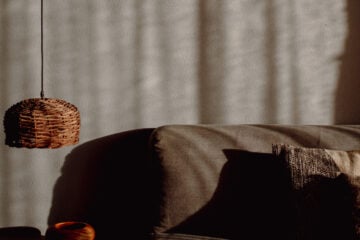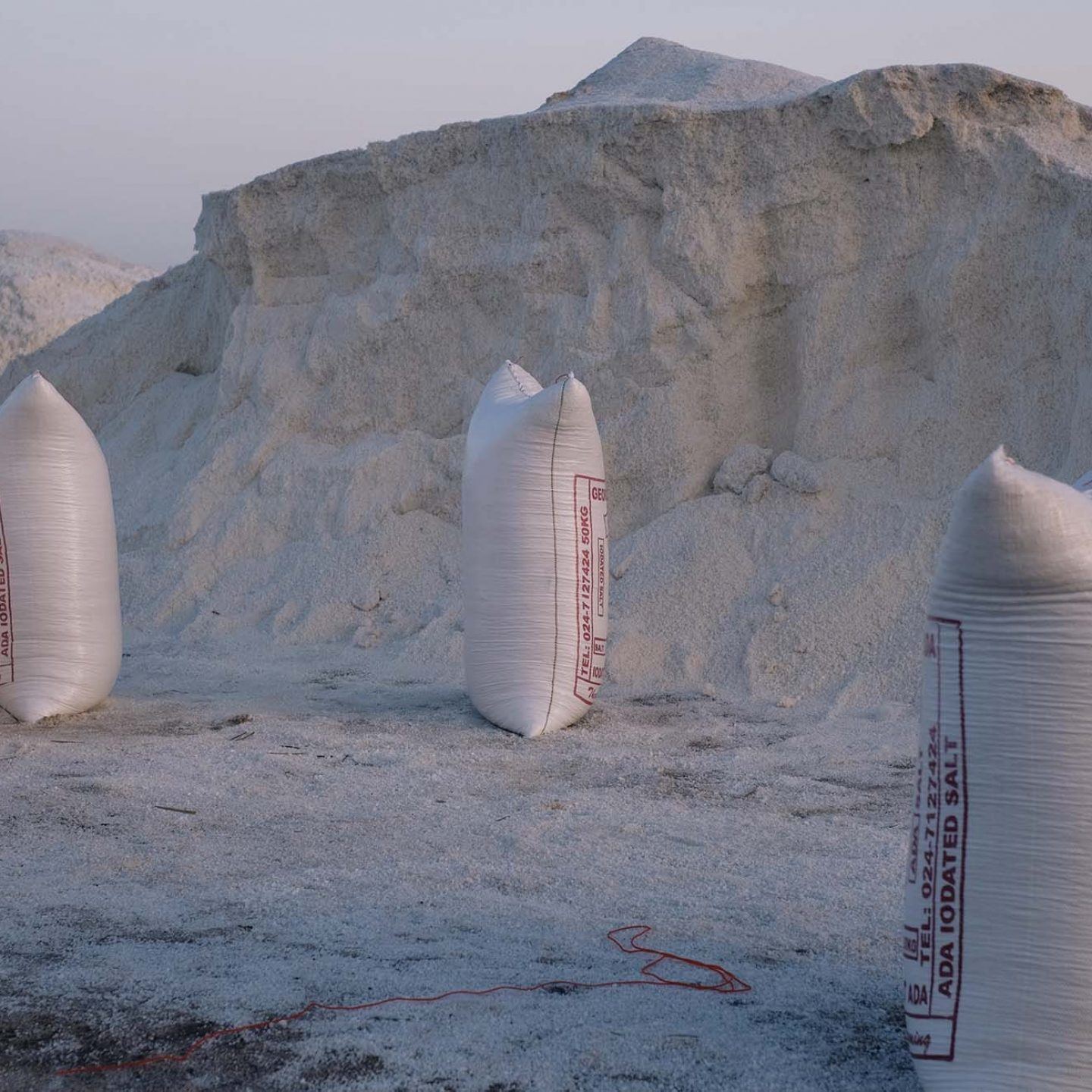
Salt Winning In The Songor Lagoon: Adrian Morris Photographs The Sustainable Practice At Risk Of Disappearing
- Name
- Adrian Morris
- Project
- White Gold
- Words
- Rosie Flanagan
Just a short drive from the city of Ada is the Songor Lagoon; a UNESCO Biosphere Reserve, and one of Ghana’s most precious wetland areas. Australian photographer Adrian Morris spent an afternoon photographing the lagoon’s salt winners, Ada Songor people whose traditional methods of working the land are under threat, and with them, the wetland itself.
The Songor Lagoon measures at over 28,700 hectares; a monumental body of water surrounded by mudflats and mangroves and inhabited by an abundance of aquatic life. During the European winter, the already sizeable bird population of the wetland swells, often reaching numbers as large as 100,000. The lagoon has given life to this area of Ghana; to plants, to animals, and to the humans who have sustainably harvested salt and fish from its waters for generations.
Today, neither fishing nor salt winning in Songor are as they were. Shaped anew by corporate greed and the push and pull of capitalism, commercial activities are causing the rapid destruction of this once bountiful natural resource. Since the early 1990s, a process called ‘Atsiakpo’ has turned much of the collectively owned body of water into a series of private salt pans, with sundry adverse effects. Whilst increasing the harvest, it has diverted much-needed water from the rest of the lagoon, destroying the local fishing economy – which was undertaken in the seasons adjacent to salt panning, and the soil of land once used for farming.
The increased level of salt extraction due to these private projects, coupled with the diversion of feeder streams for irrigation, has led to a significant decline in the surface area of the lagoon since the 1980s. It has further rendered the region’s tradition of sustainable and communal salt winning almost obsolete. After working the lagoon as a community for over 400 years, the Ada Songor people have had no choice but to seek employment from those who have seized control of this once public space. The majority of those working as laborers on private dykes are women. All are paid meager wages. In 2011, private enterprises and the Ghanaian government attempted to relocate local indigenous communities from areas of Songor so that investors could take control of the profitable lagoon. The people refused: why should they be the ones to leave?
Morris’ series ‘White Gold’ does much to illustrate the relationship between the Ada Songor people and this body of water; his golden hour portraits offer a small insight into their connection to place and to the practice of salt winning. “The local people have been fighting to maintain their sustainable and traditional harvesting methods,” Morris explains, “and to hold onto land that has been passed down to them from their ancestors for centuries”. Though his images of the salt winners are arresting in their beauty, the title of the project alludes to something darker – we mine the world for everything, but do we consider the cost?
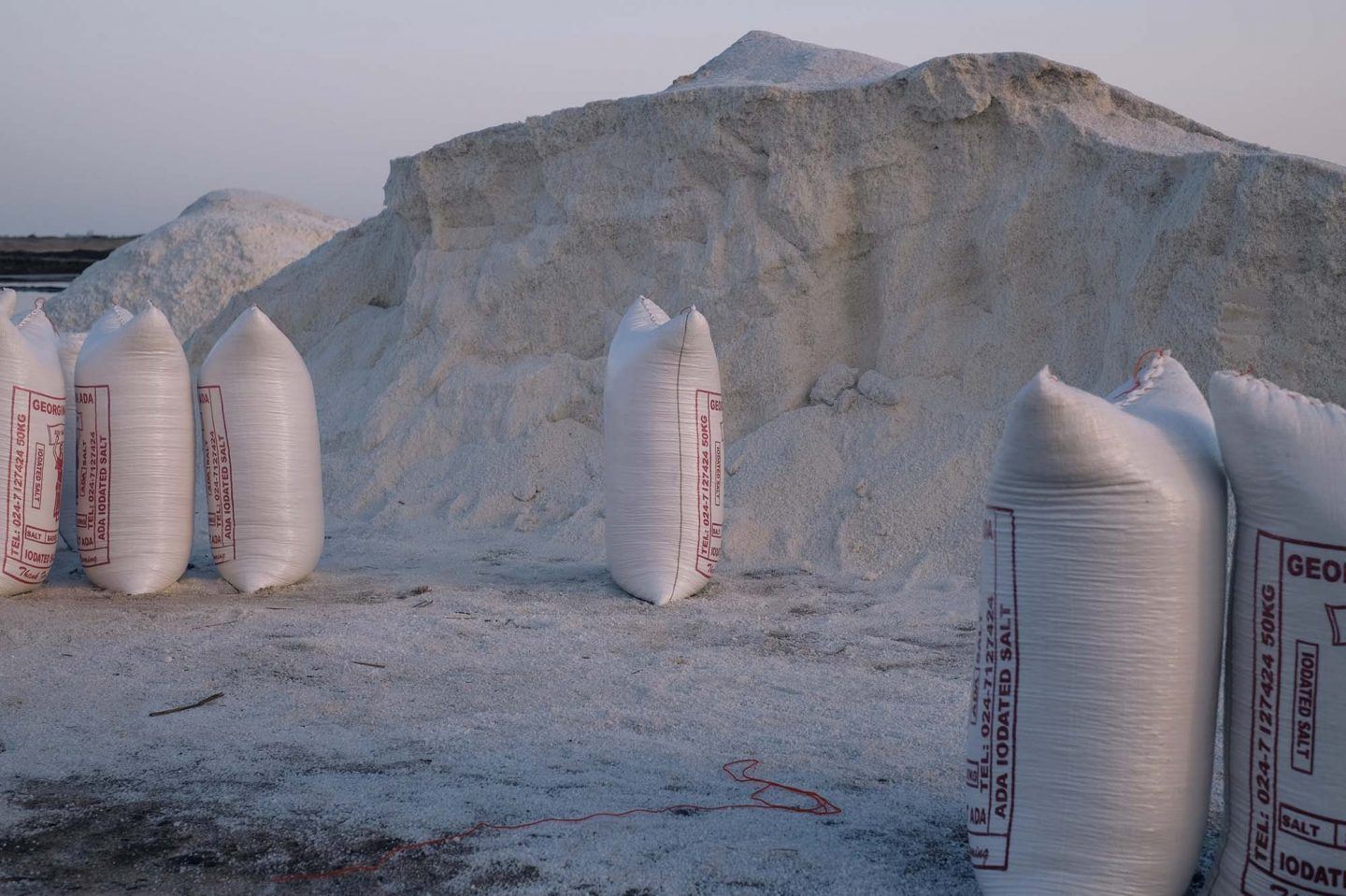
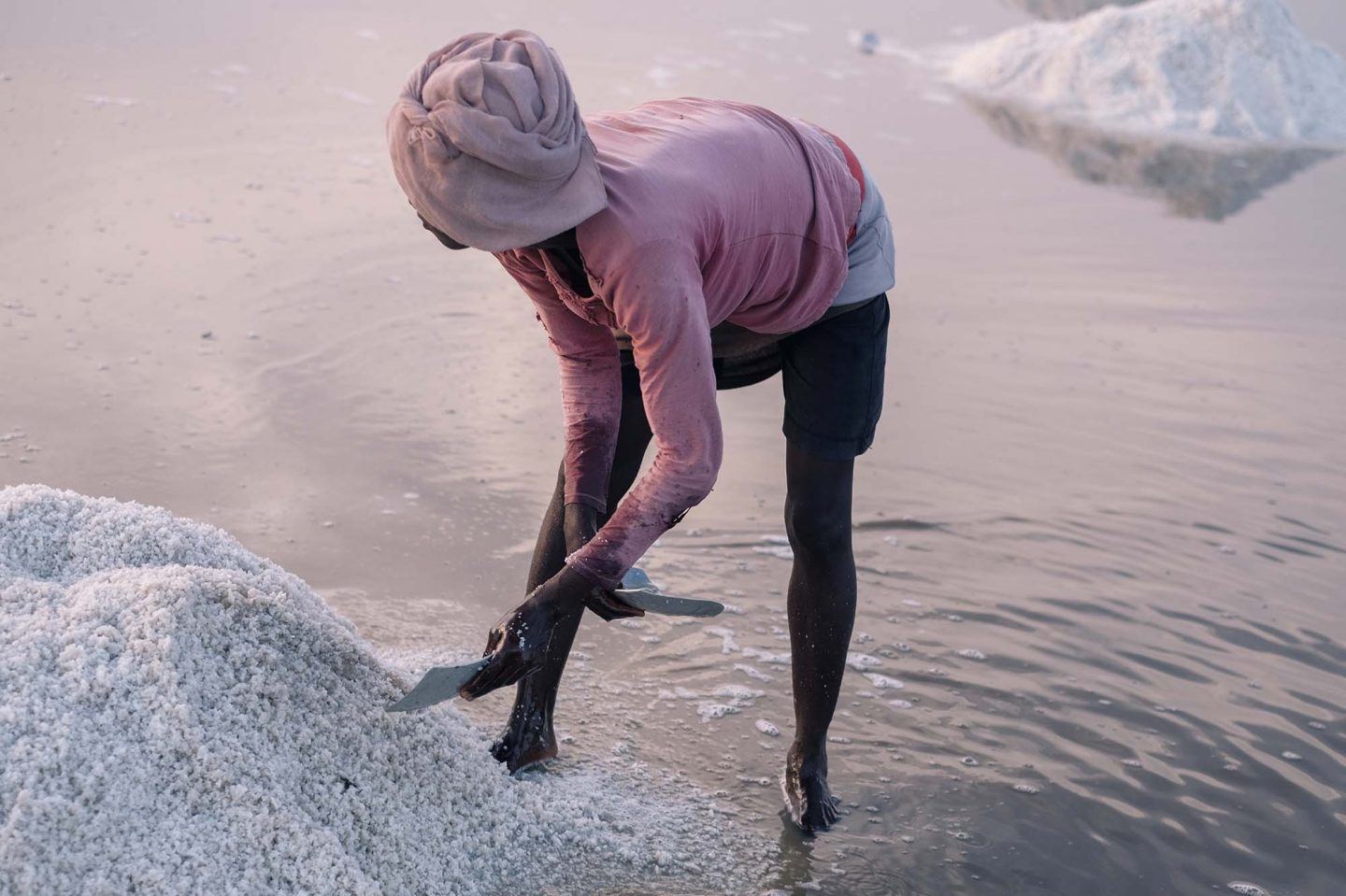
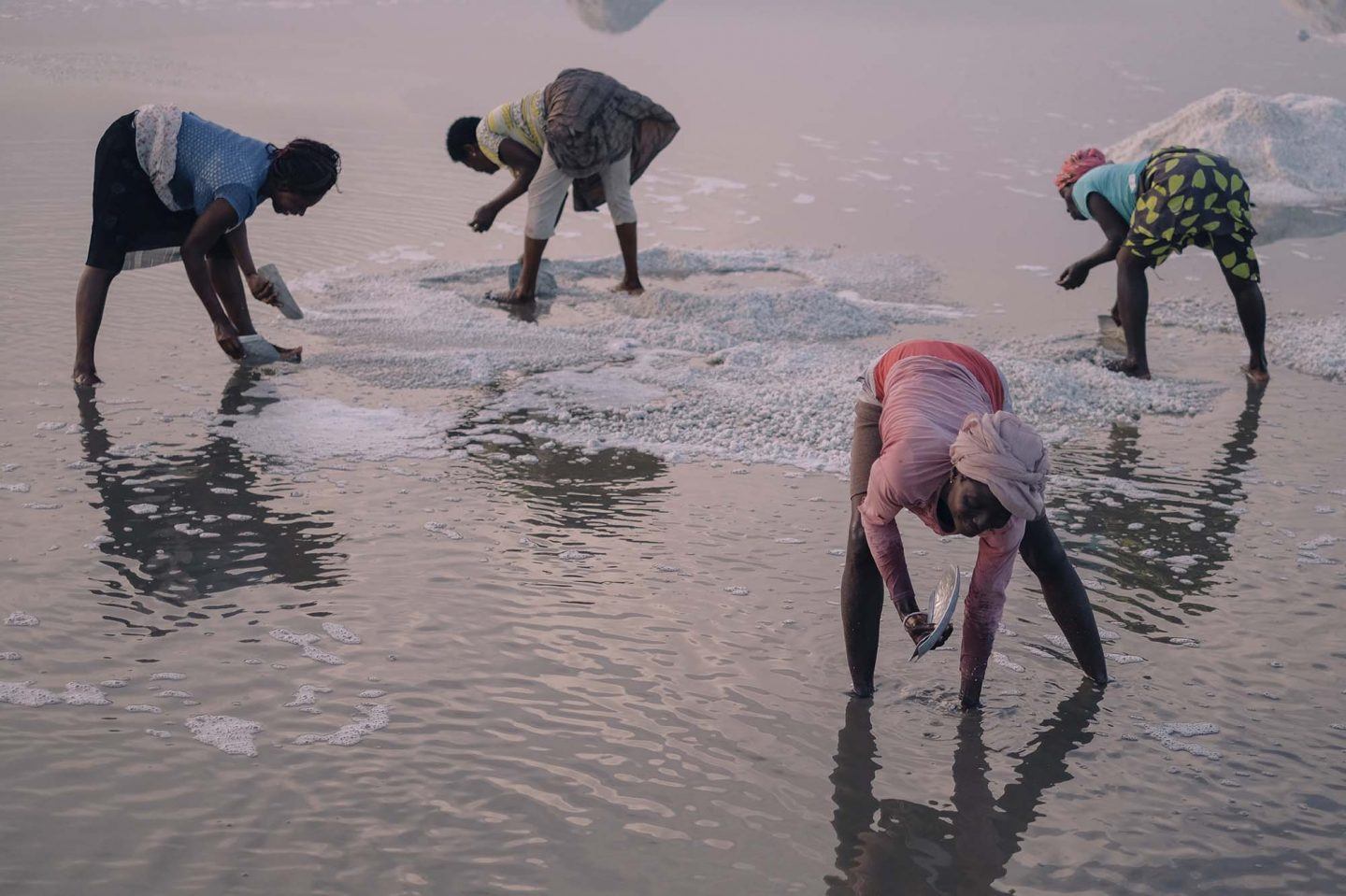
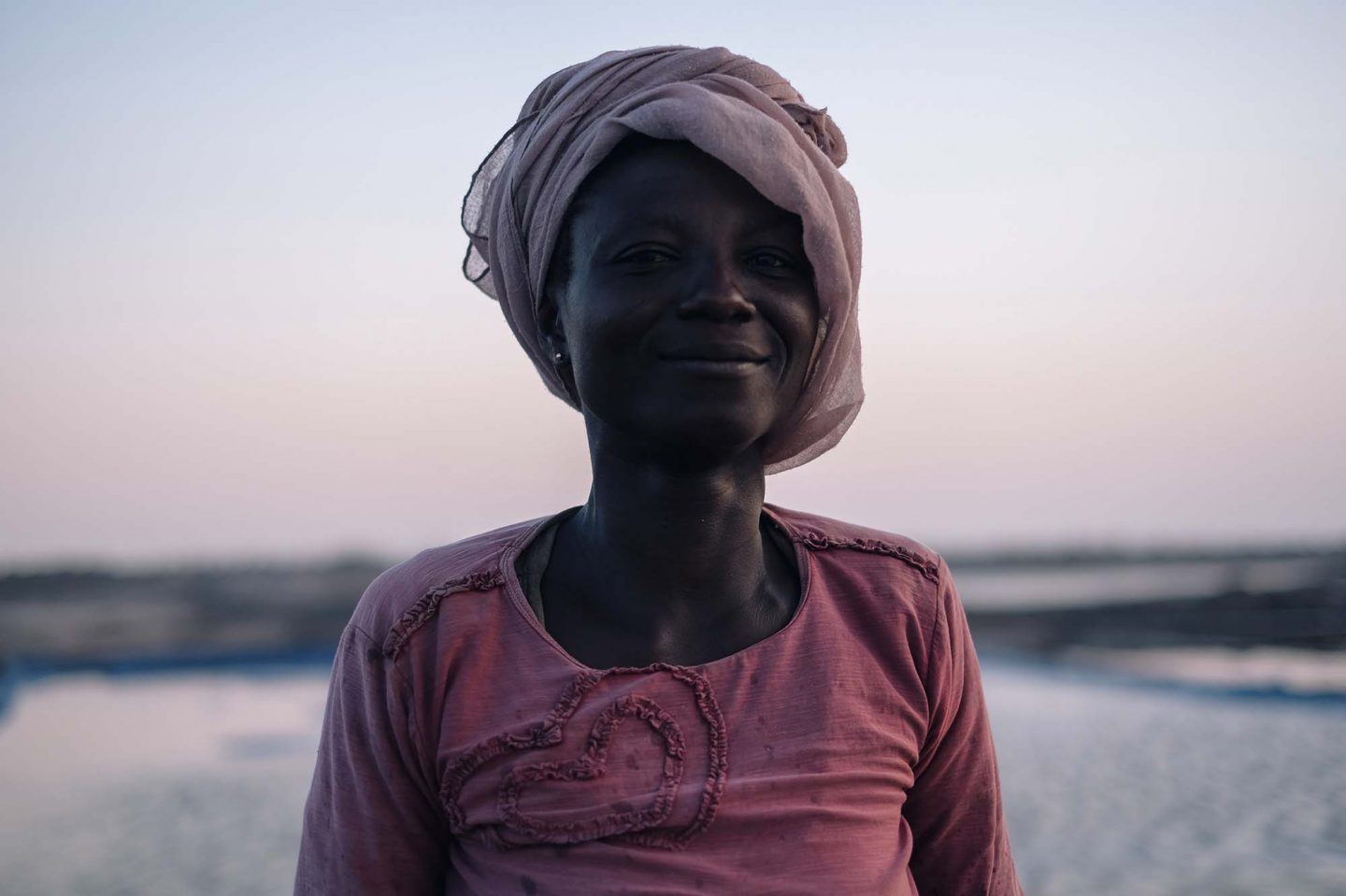
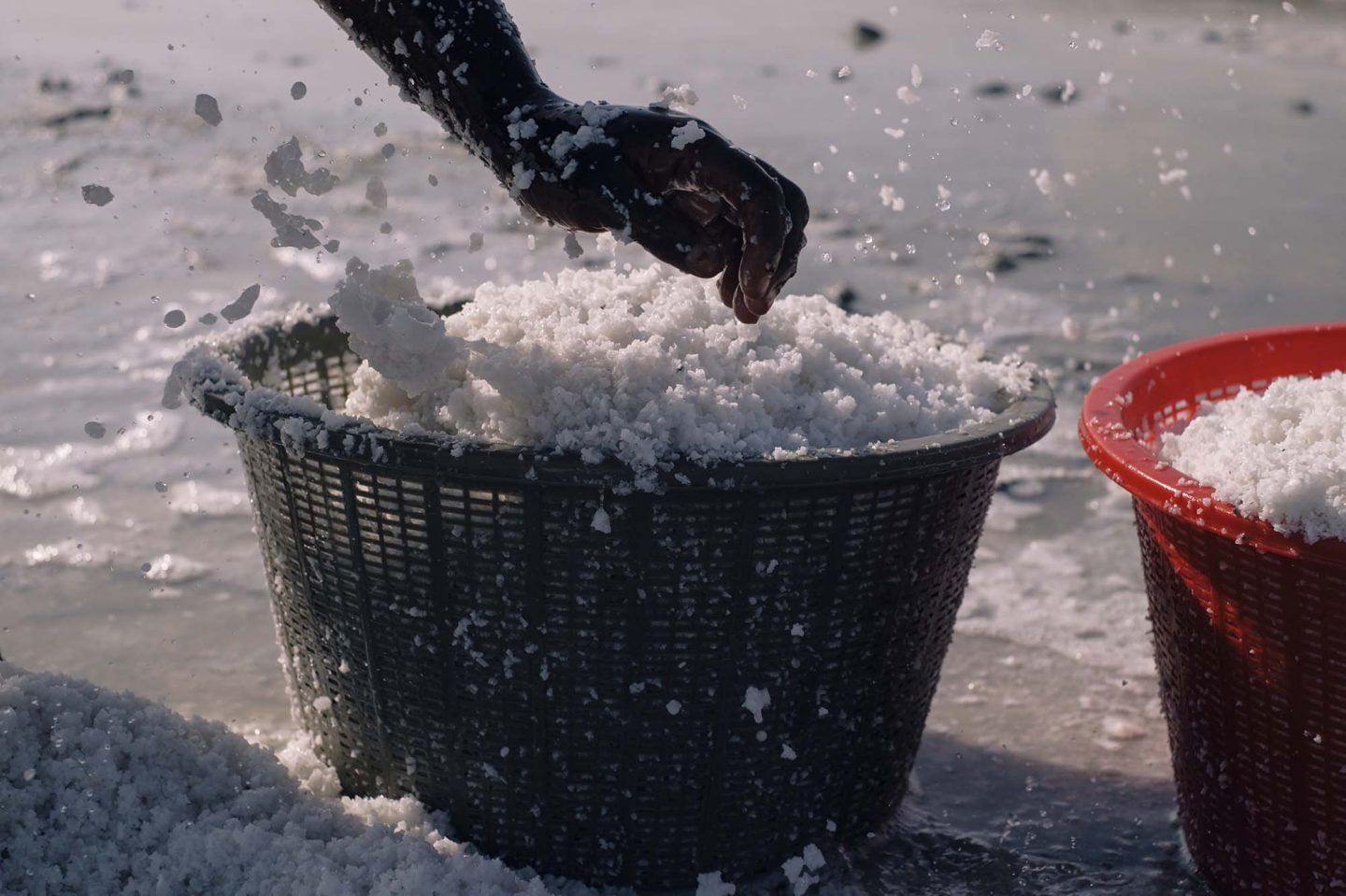
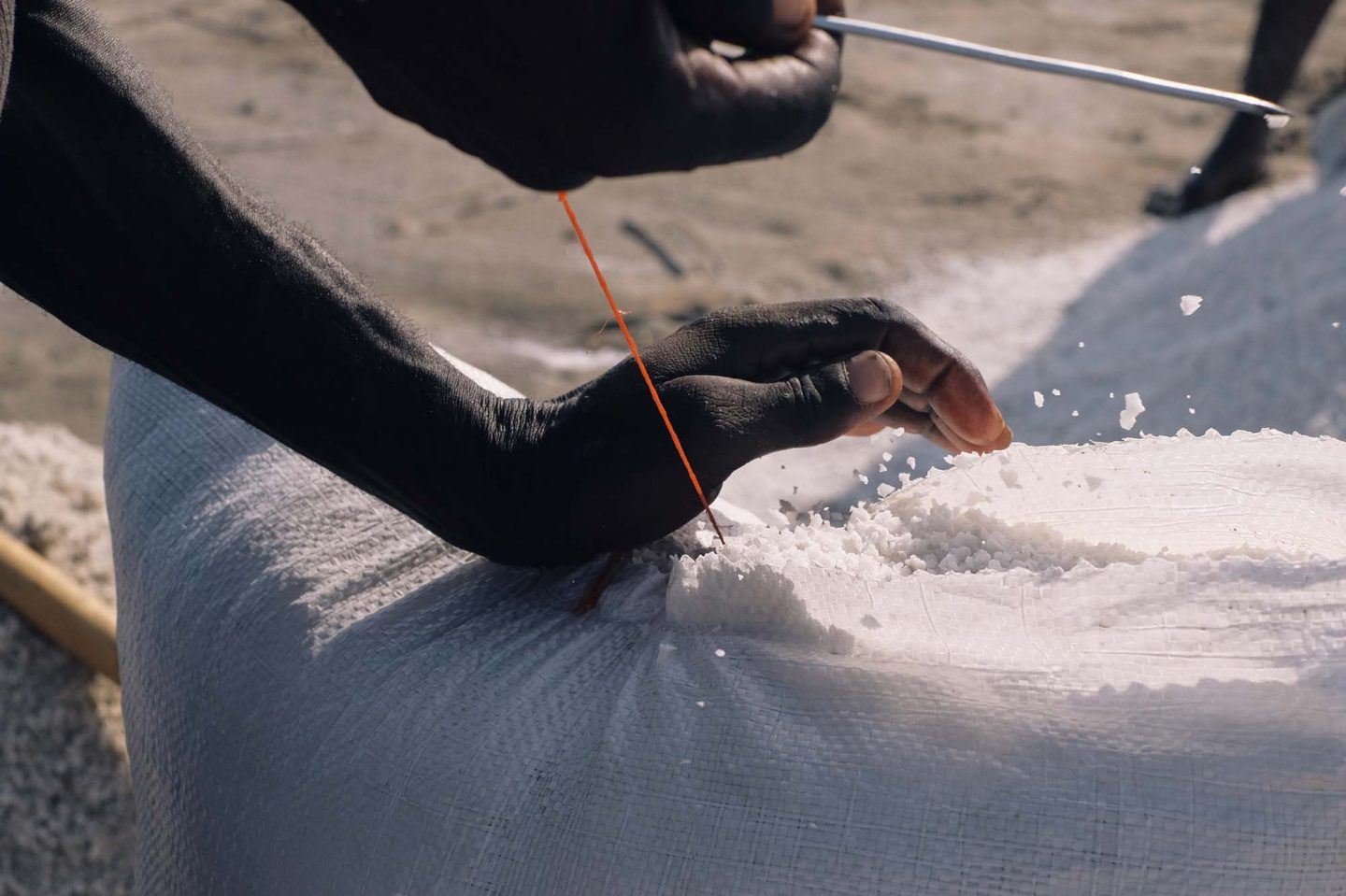
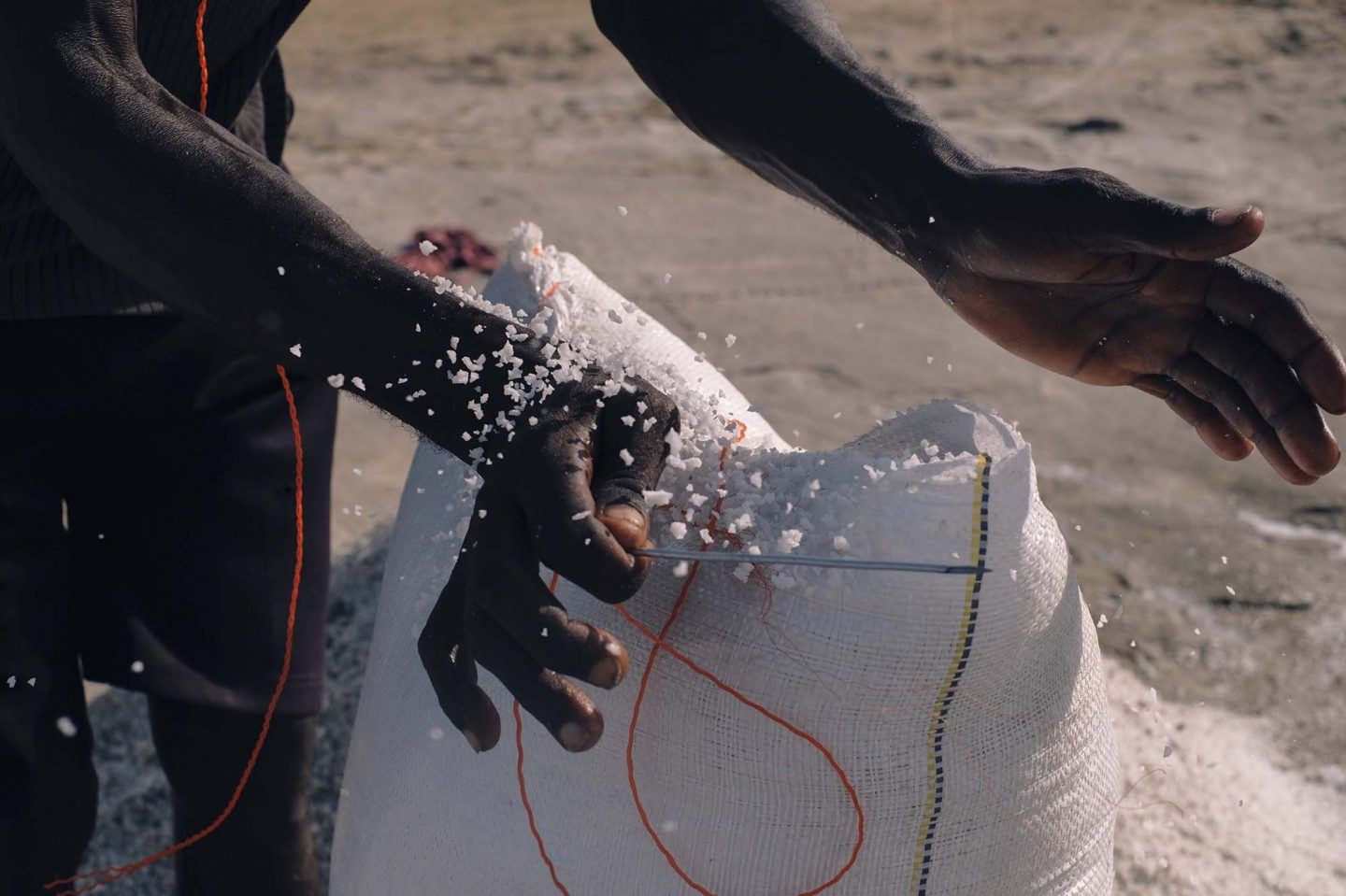
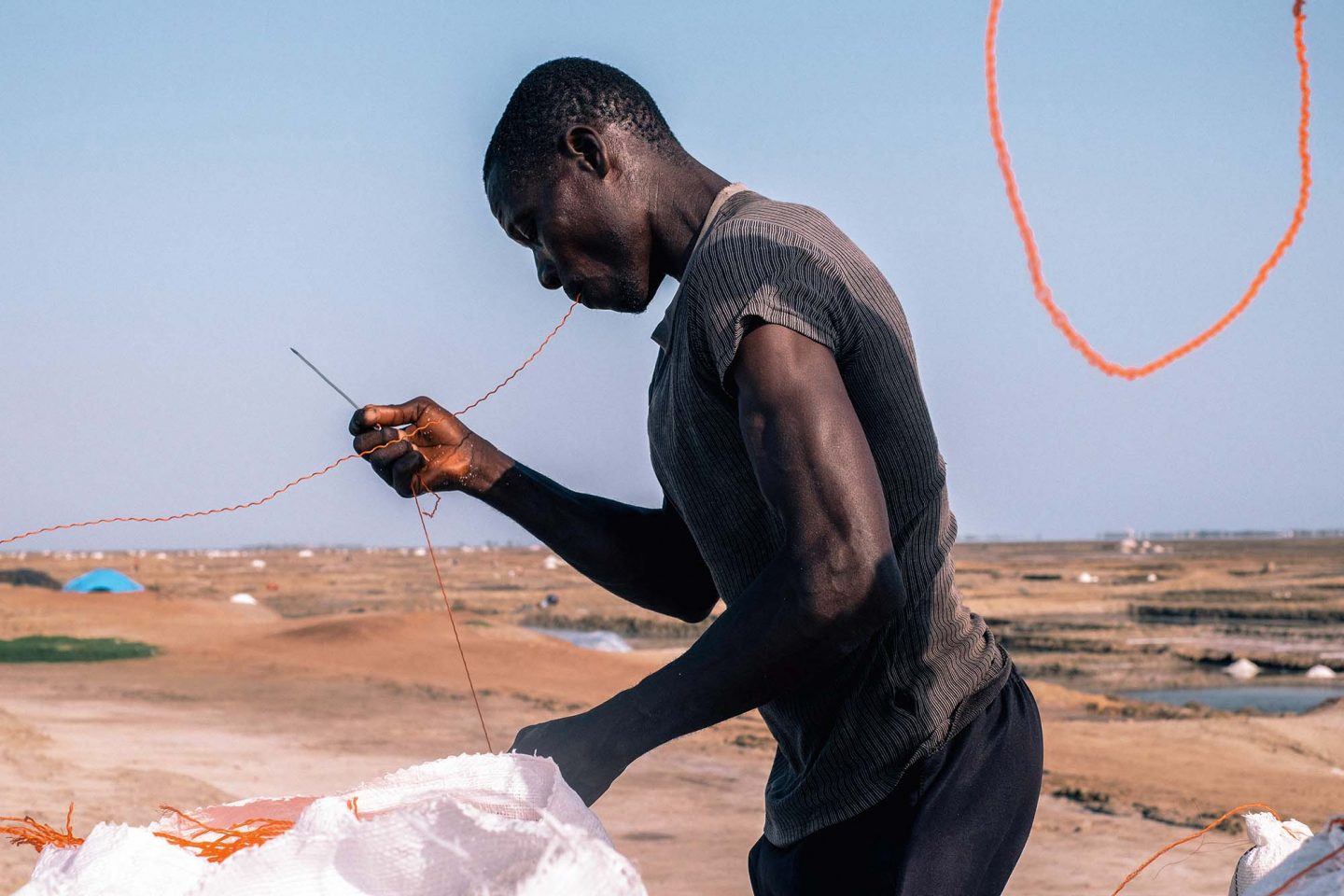
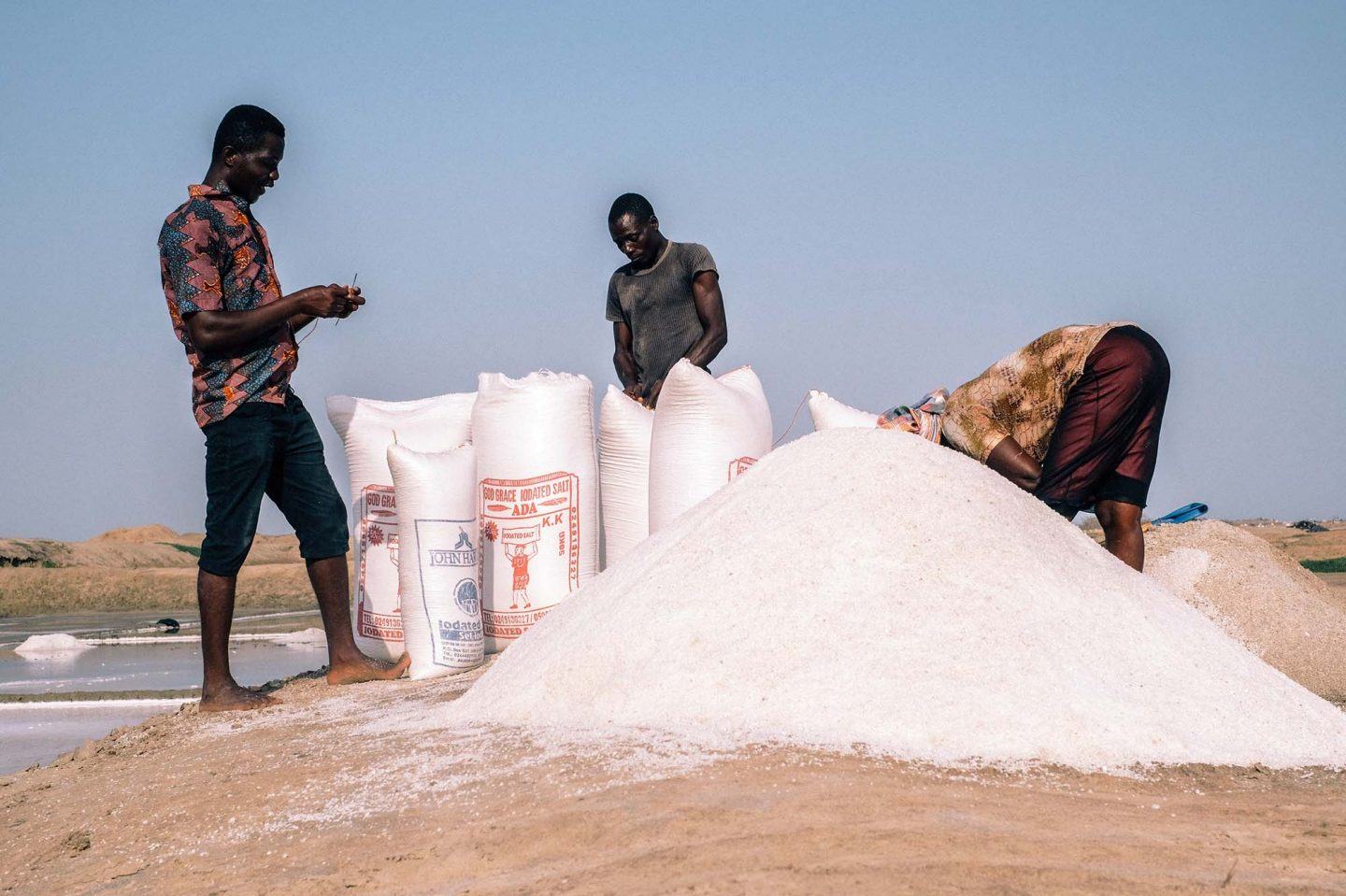
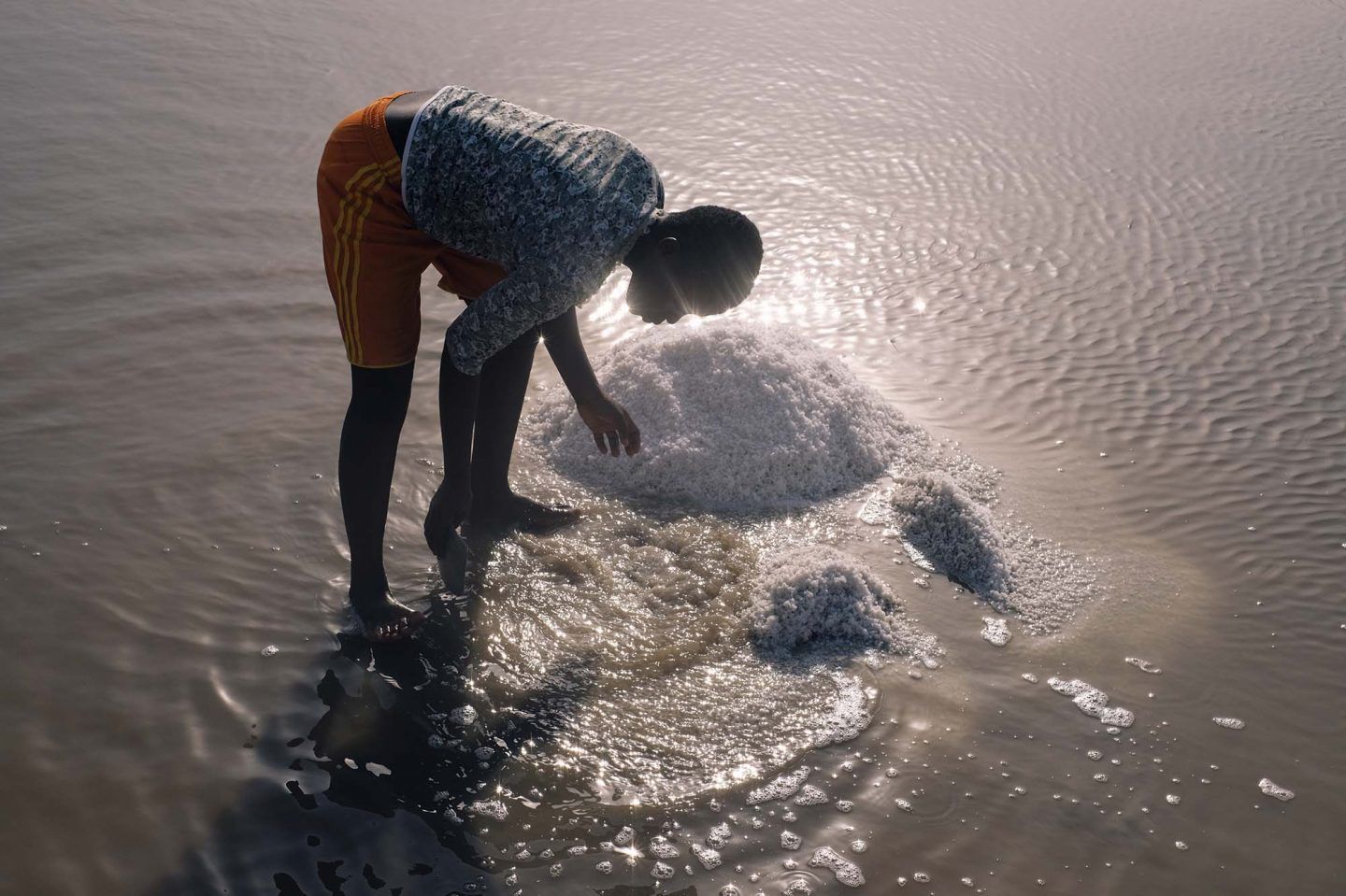
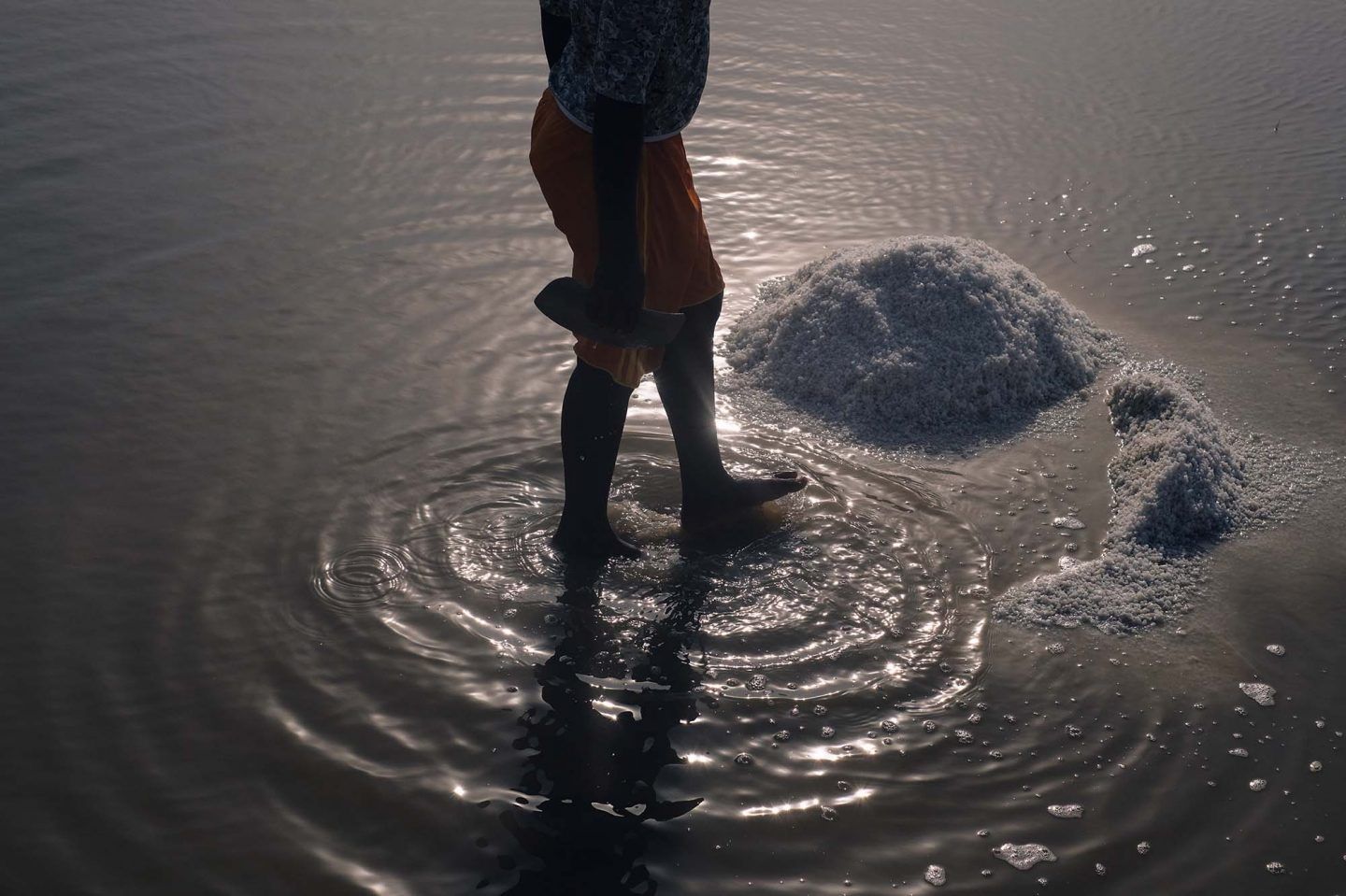
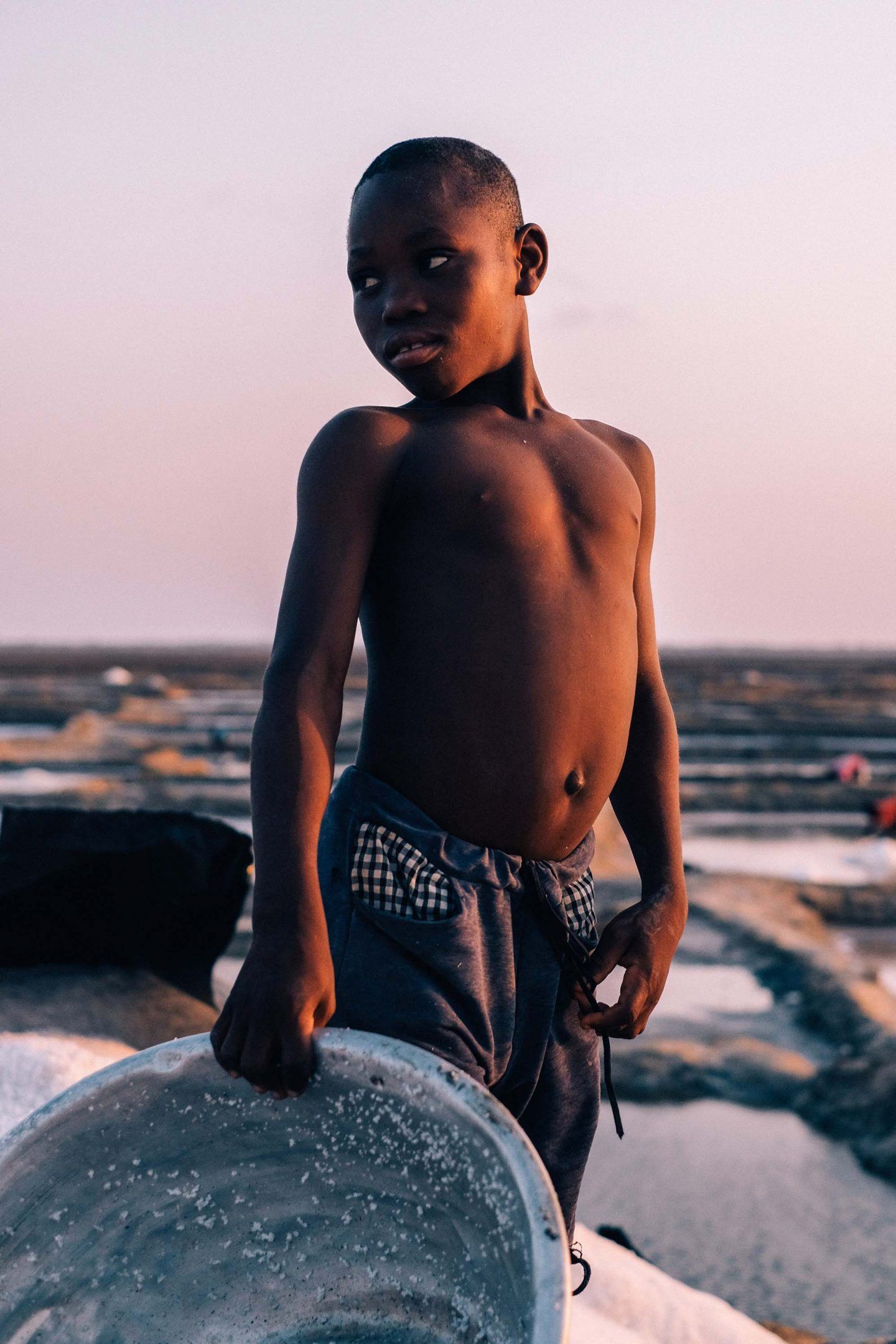
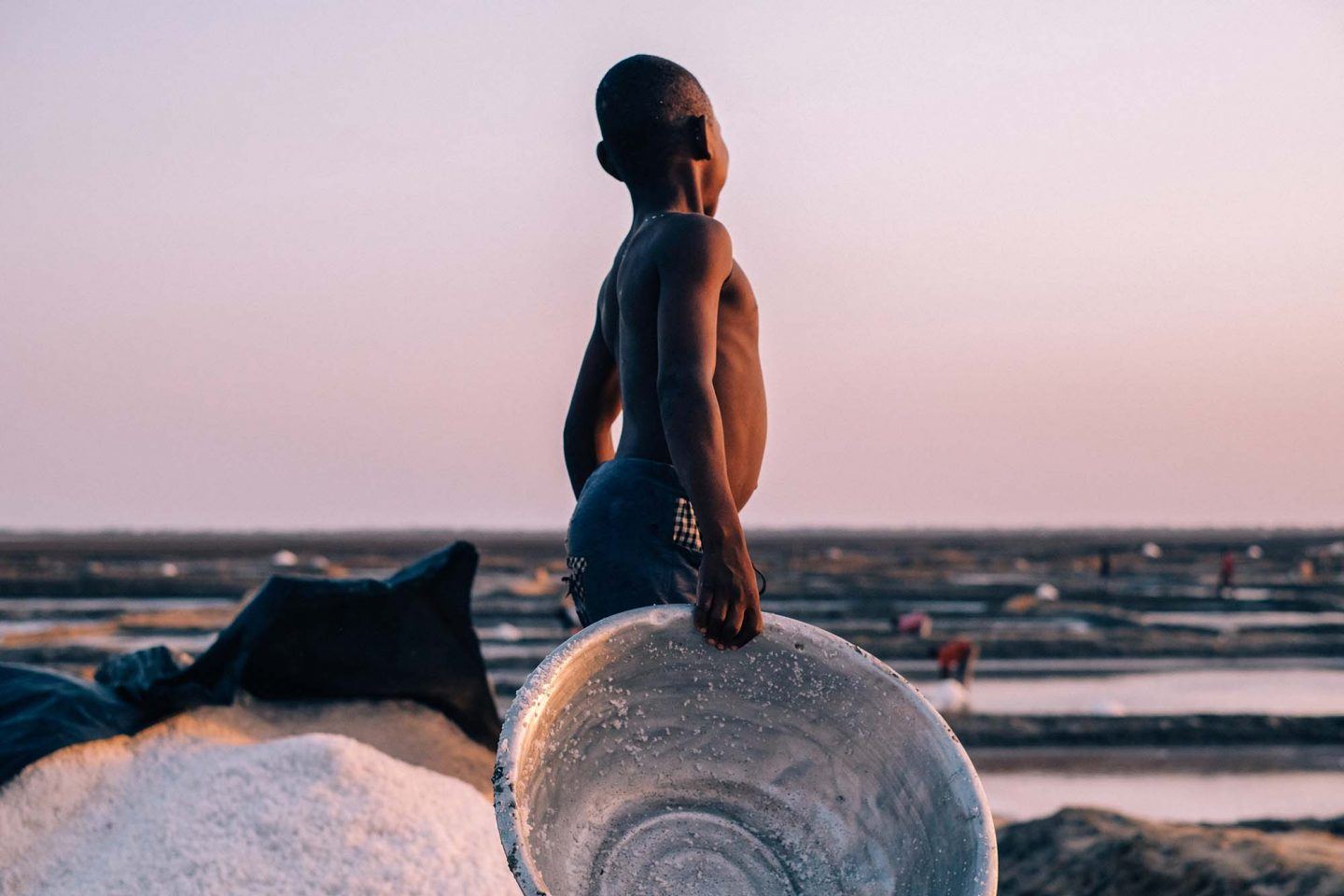
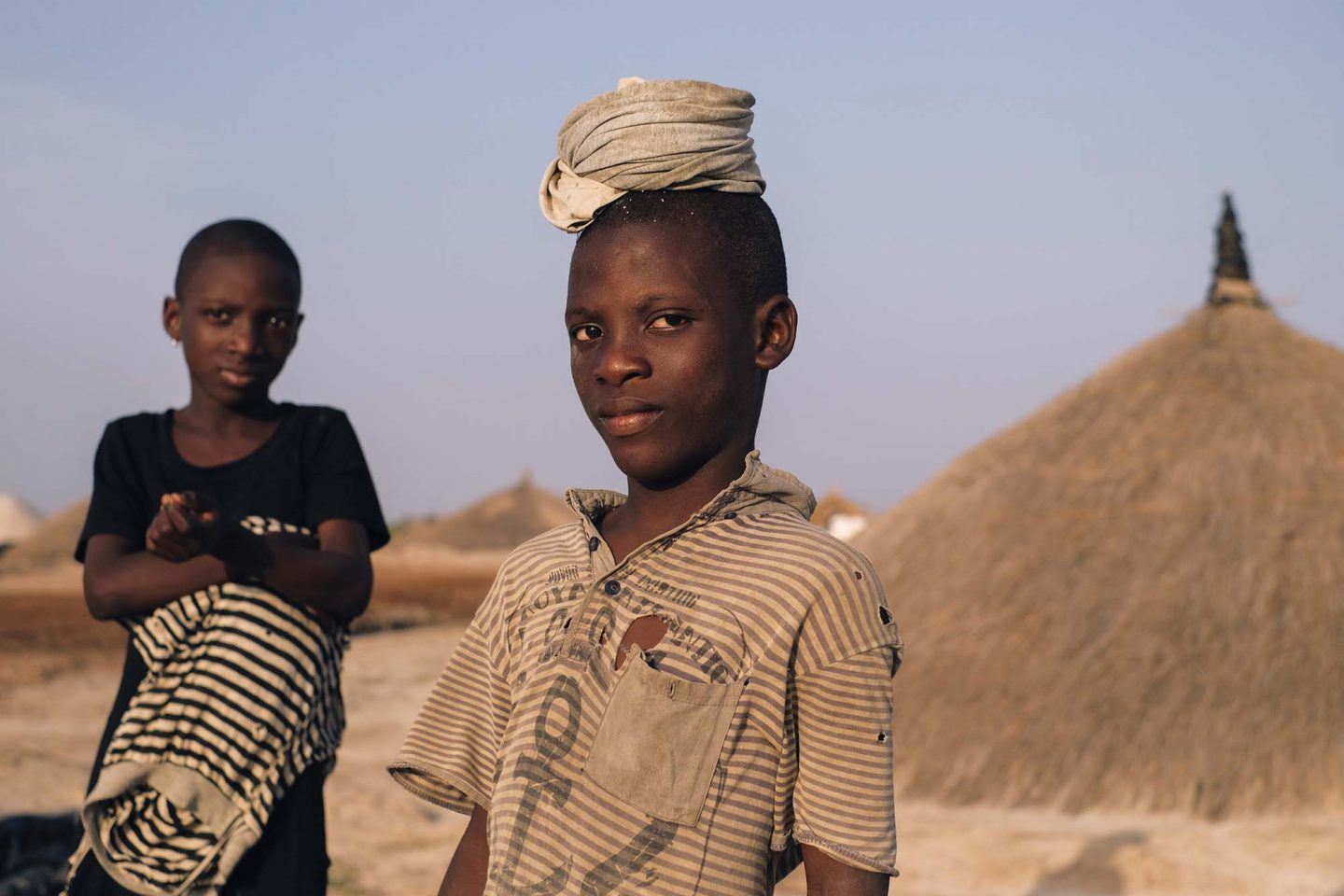
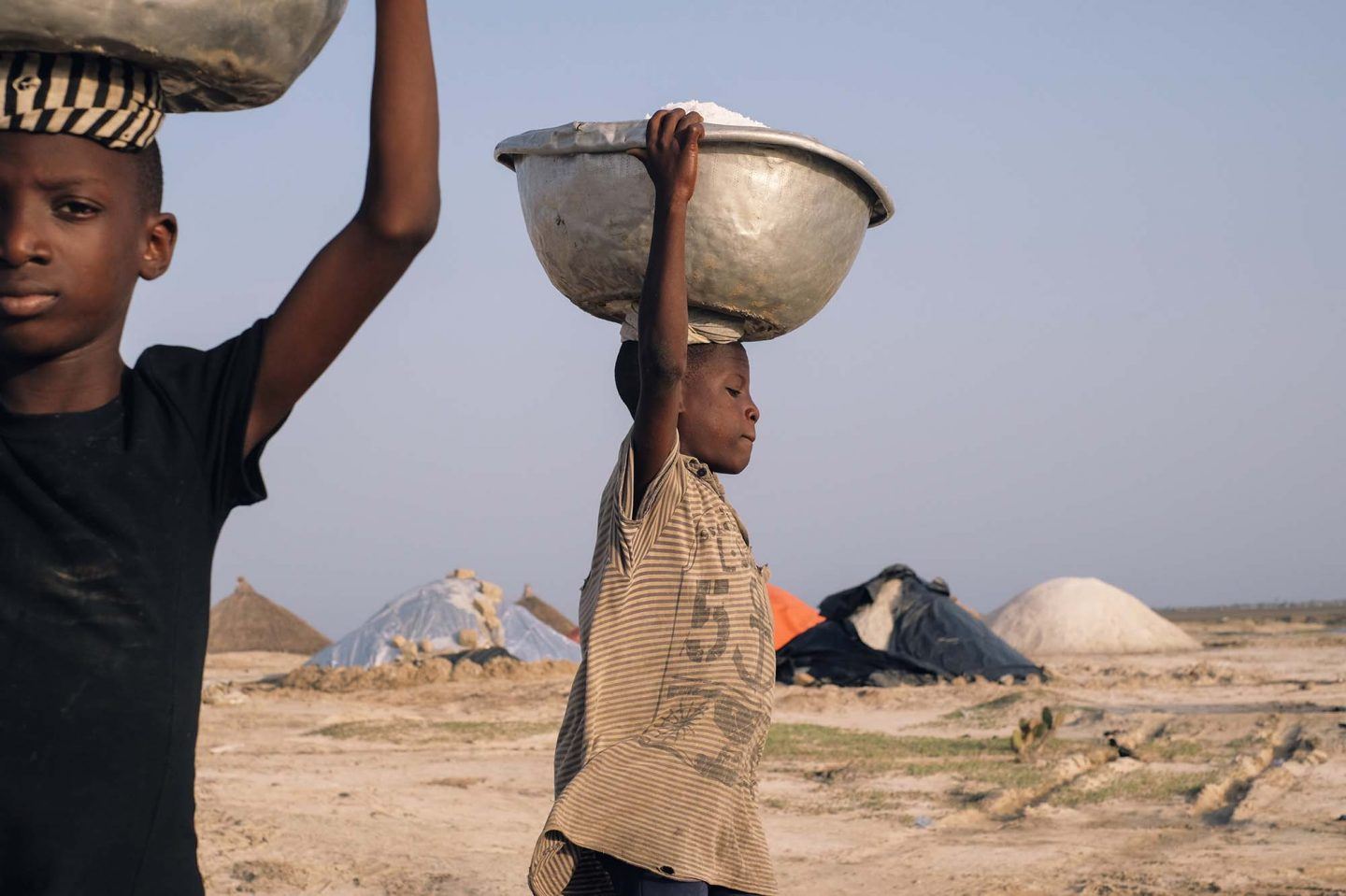
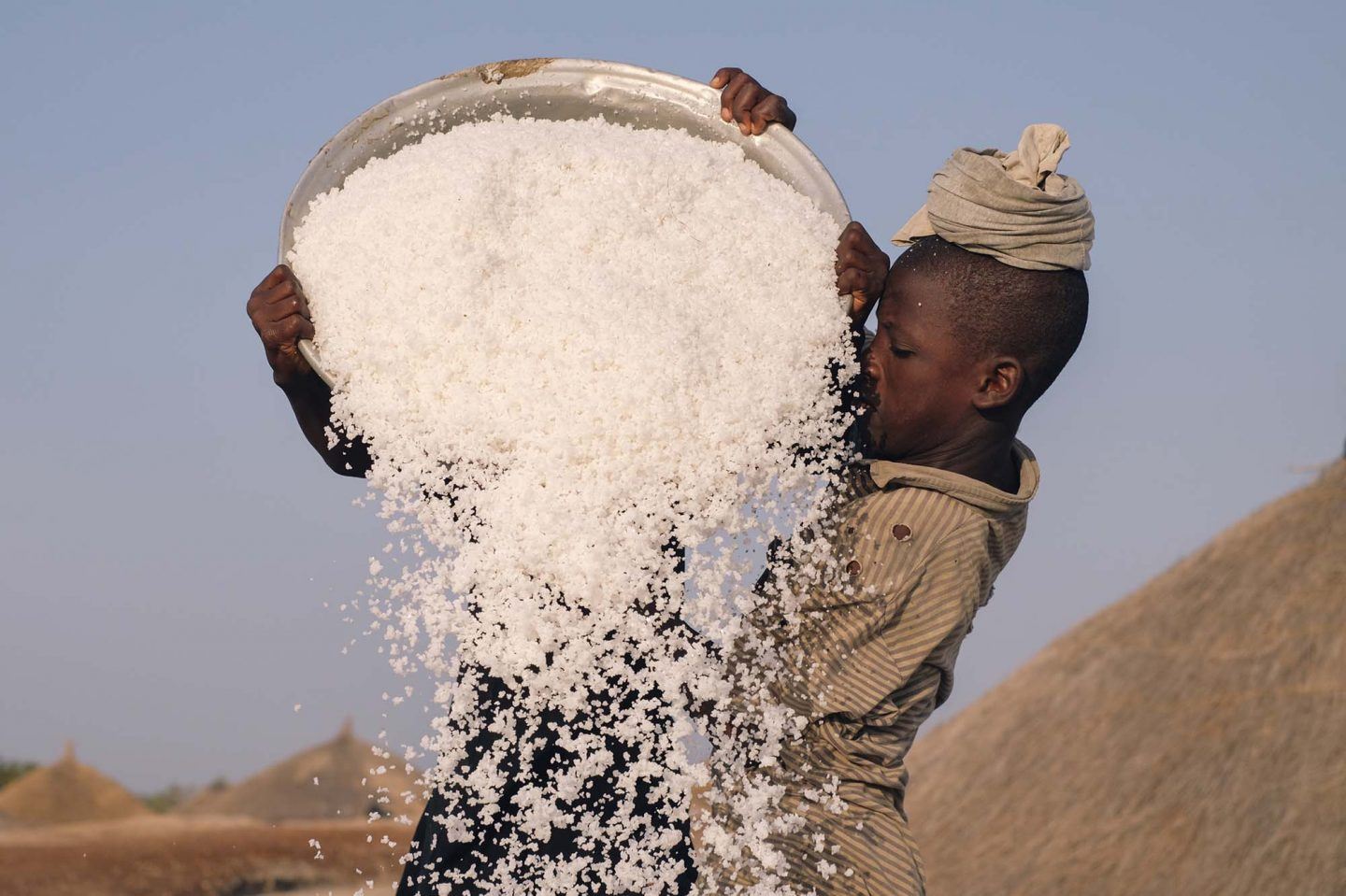
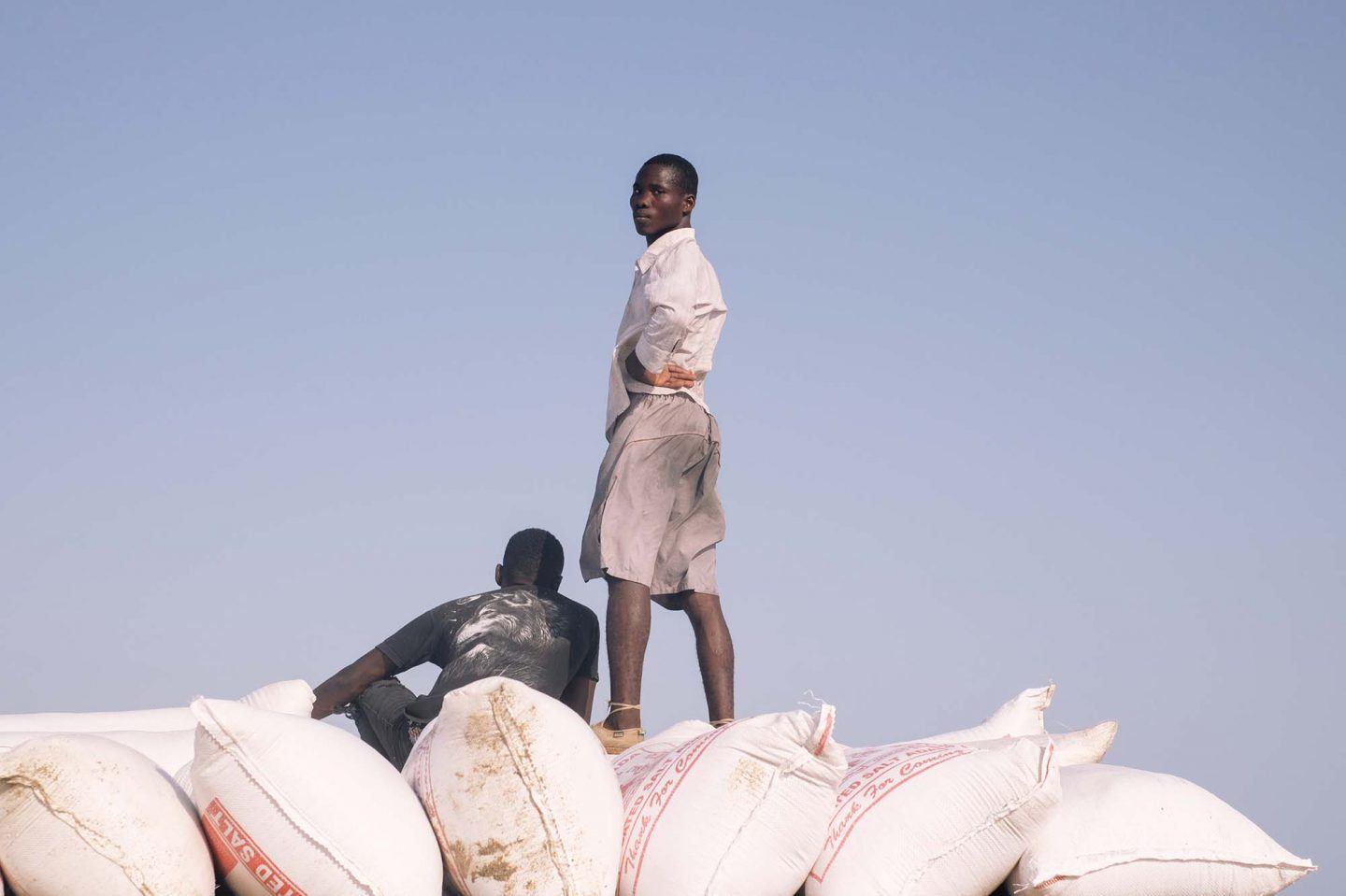
All images © Adrian Morris
